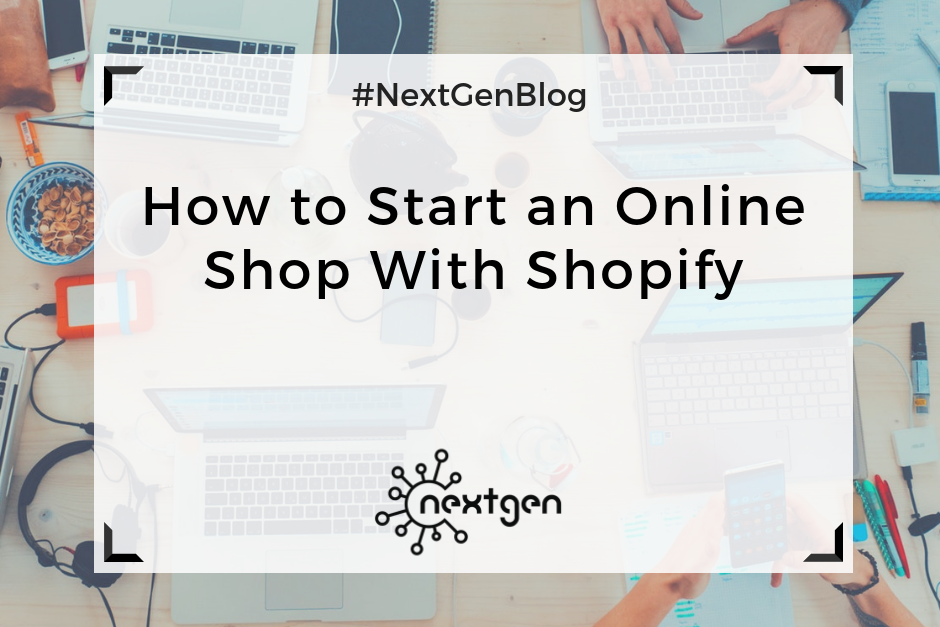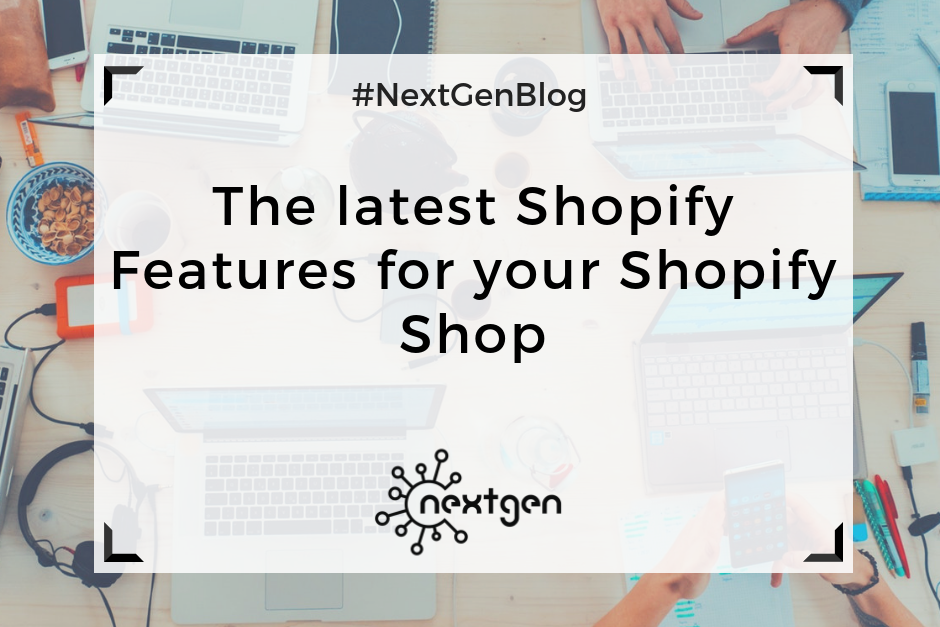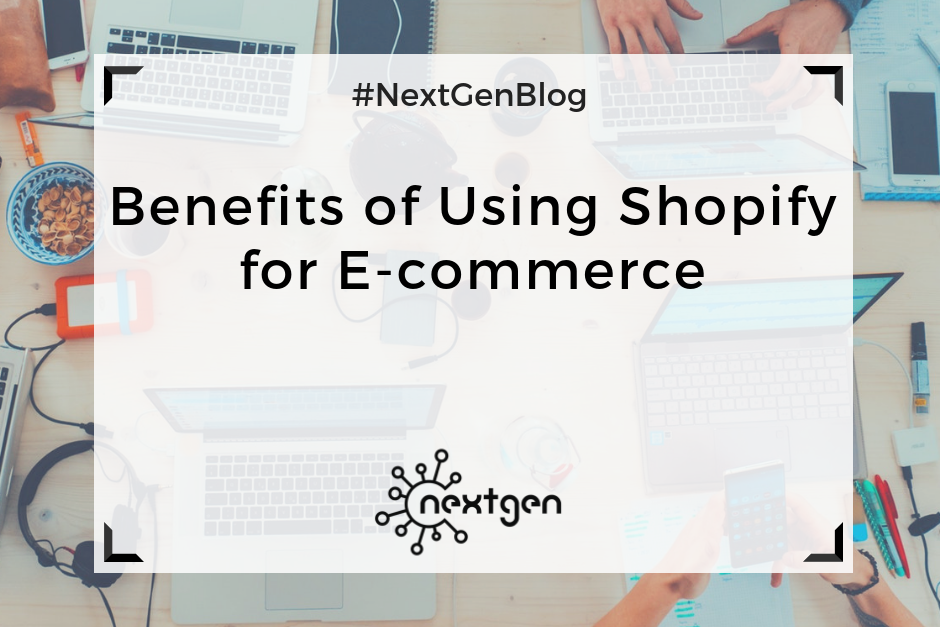
by Sofi | May 18, 2018 | Other
In the past, creating a store was a large undertaking that included leasing space, purchasing inventory, structuring shelves, and working lengthy hours in the store. Now, things are set differently, and thanks to the revolution acknowledged as the World Wide Web, creating a shop can be completed easily with little more than a few mouse clicks. Here are the best methods of launching an online store.
#1 Sign Up with Shopify
To begin with, visit Shopify.com. Use the signup form to create an account. Fill out the compulsory details and click the ”Create your store now” button. The name of the store must be unique or Shopify will request you to select something else. Afterwards, you will be required to provide more details, including your name, address, country, and a contact number. Moreover, you will need to provide what you aim to sell, or if you are just figuring out if Shopify will work for you, you can choose ”I’m just playing around” in the ”Do you have products?“ dropdown, and ”I’m not sure” in the ”What will you sell?“ section. Once complete, click ”I’m done.”
#2 Setting Up
After completing the sign up process, you’ll be directed to the store admin screen. At this stage, you are prepared to start modifying your store, uploading products, and setting up payments and shipping.
#3 Select a theme
The following phase in opening the store is to select how you’d like it to look. This can be done by selecting the “Customize Theme” button on the dashboard screen. Select the “Explore Free Themes” button to see the existing selections as part of the Shopify package. Be mindful that some of the themes have more skin selections that you’ll notice after you open the popup window describing the theme. When you choose the template, select the “Add” button and scroll down and select the “Actions” button and select “Publish.”
#4 Products
In order to set up the products, select the ‘’products’’ text link and then select ‘’Add product.’’ After, you will be taken to a page where you will be able to enter the title of the product, images, delivery weight, and additional details. Moreover, there is an option to set up a “Compare At” price that will appear next to the real price on your site as a crossed out amount, informing clients that they’re receiving a product for less than the original retail price.
#5 Collections
When adding a product, it is a good idea to place them into collections, groups of similar items. For example, ‘’jewelry’’ can be one collection, ‘’handbag’’ another, and ‘’sale” another. Numerous Shopify templates work with groups, so it’s smart to take advantage of it.
#6 Payment Processing
In order to set up payment processing, select the word “Settings” next to the gear icon and then select “Payments.” If you would like to use Shopify as your processor, select “Complete account setup,” or else select “Change provider” and pick another processor.
#7 Discounts
Shopify makes it enormously easy to offer discounts to the clients. You will just need to select “Discounts,” followed by “Create Discount,” and all of the necessary steps to save your clients money will be laid out. The discounts can be set up to kick in on either a percentage, fixed amount, or free-shipping. In addition, a time window for how long the discount will be active can be set, or you can keep it open ended.

by Sofi | May 11, 2018 | Other
Tobias Lütke was unsatisfied. He was aware that he had amazing products to sell (a line of elite snowboards), but he was struggling to find a practical method to sell his products online. Despite his numerous years of professional programming knowledge, Lütke discovered that his hard work was thwarted by inflexible e-commerce platforms with partial design selections and decided to create the ideal software himself with a friend Scott. The duo spent a year and a half growing and refining their software, paying particular attention to flexibility, and officially launched their online-storefront builder in 2006 and called it Shopify.It was a difficult beginning: The co-founders were without salaries for almost two years, and soon after launch, Lake departed. The start was slow, but then people started to see that Shopify had a good product. Later on, Lütke brought on Cody Fauser as CTO and Daniel Weinand as chief design officer. The new team’s emphasis on completing their formation paid off in 2008 when the company became profitable. In 2010, Shopify attracted the attention of investors, securing $7 million in funding, and in 2011, the company raised another $15 million. Regardless of Lütke’s knowledge in programming, he worked closely with each position at Shopify–from sales to customer support. That experience provided him with an instinctive sense for hiring and helped him make a decision as to who the top candidates for the job positions were at Shopify. Lütke continues to hire people according to this model to attract additional top talent, even as the company has grown tenfold. Shopify began in 2011 with 10 employees and now has more than 100 employees. Some of Shopify’s secrets to success are:
#1 Develop something you need
When Lütke wasn’t able to find an e-commerce platform to sell his products, he developed one himself. He believes that it is extremely powerful for people to resolve the problem they have. Also, a very close proximity to the people who in fact use the product is a key element.
#2 Create something unique
Develop something excusive; there should be a necessity in the market for your knowledge, product or service. Shopify isn’t the first e-commerce platform, but it was created to give retailers a new choice in the e-commerce world.
#3 Make the best version
Regardless of the fact that the product planned to be sold is not excusive, businesses should make the product the greatest version out there. Lütke was aware that the innovative platform he created for his online snowboard store wasn’t what each e-tailer was searching for, so he spent a year and a half refining Shopify before launching his online store. He continues to highlight product expansion and progress: as a result of a 2,000 percent growth in Shopify stores’ sales through mobile devices, the company recently released features for users to create designs specifically for tablets and iPhones.

by Sofi | Jan 26, 2018 | Other
Shopify is one of the greatest e-commerce platforms utilized by sellers to structure their online retail businesses. If you are managing a Shopify e-commerce platform and searching for the latest features for your Shopify store, then look no further! Check out the features below and set yourself for success.
#1 Introducing Shipping Labels on Mobile
One of the biggest advantages in entrepreneurship is that you get to choose when and where you work. With the Shopify app for iOS and Android, Canadian and American merchants can add shipping to the list of flexibility and receive complete access, including low rates with supported carriers (UPS, DHL Express, USPS, and Canada Post), directly in the Shopify app. Now using a computer isn’t required to buy and print your shipping labels, and you can complete the procedure from any place.
#2 Start Selling on eBay with Shopify
Shopify and eBay have united to give you access to eBay’s customer base of over 171 million buyers. Merchants based in the U.S. and selling in USD can sell on eBay while suitably handling the fulfillment and inventory procedure within Shopify. This merger with eBay enables you to: handle your inventory and orders all within Shopify, manage eBay orders directly from Shopify, prepare exclusive prices for eBay listings, and handle your eBay business policies.
#3 Introducing UPS for Shopify Shipping
UPS is another top feature in Shopify Shipping; U.S.-based Shopify merchants can provide their customers with an excellent delivery experience just like enterprise retailers. UPS and Shopify Shipping will enable you to receive competitive rates at industry-leading rates.
#4 Google Autocomplete for Shopify: Less Friction at Checkout, More Sales
Google Autocomplete provides an easy and quick checkout experience for customers. The numerous fields to be finalized at checkout can be time consuming for your customers or even prevent them from buying the product. This becomes even more clear for customers on mobile, where checking out on a small screen can be even more time consuming. With the Google Autocomplete feature, when customers arrive at checkout and start entering the first few characters of their address, Google Autocomplete will immediately complete the job and pre-populate their address. Incorrect addresses and re-typing are virtually excluded.
#5 Introducing Bulk Label Printing for Shopify Shipping
Bulk label printing is an efficient method to complete your orders more proficiently, saving you valuable time. Bulk shipping is a free upgrade for any merchant in Canada and the United States who purchase and print their shipping labels through Shopify. Bulk shipping was created and optimized for speed and ease. It will no longer be a necessity to click into each separate order to buy a shipping label. Rather, you’ll be able to do everything right from your orders list.
#6 Introducing Shopcodes: QR Codes That Make Mobile Shopping a Breeze
Shopcodes can only be generated within Shopify stores, and each QR code is unique and trackable so you can understand where traffic and sales are coming from on your Shopify Analytics dashboard. Just install the free Shopcodes app, and you can produce Shopcodes that direct customers to a product page. You can also assign discounts to Shopcodes customers can scan to save immediately.

by Sofi | Nov 17, 2017 | Other
If you’re planning to set up an online store, you’re facing the challenge of choosing an appropriate e-commerce platform. There are multiple platforms which offer great e-commerce solutions, but Shopify is a leader on the market and a go-to choice for many businesses. The reason for this is that the platform has many great features, and it’s relatively easy to use.
So, without further ado, here are the benefits of using Shopify.
#1 Affordability
Shopify offers monthly plans which are relatively cheap and affordable for any business.
- Lite plan – this plan gives you tools for selling on social media and buy buttons you can put on your website or blog. You don’t get too many options with this plan, but it goes for only $9 a month.
- Basic Shopify plan – with the Basic plan you get a hosted shop and blog with additional options such as adding unlimited number of products, fraud analysis tool, ability to add discount codes, a free SSL certificate and 24/7 customer support. This plan costs $29 a month.
- The Shopify plan – with this plan you can take advantage of all the options from the basic plan, plus additional options such as the abandoned cart recovery tool, which lets you get contact details from people that didn’t finish their orders, and send them reminder or promo message later. This is the most popular Shopify plan and is priced at $79 a month.
- Advanced Shopify plan – this plan has all the features from the other plans, with the addition of advanced report builder, dashboard access of 15 users, and third-party shipping calculation. This is the most expensive plan and it goes for $299 a month.
#2 Easy setup and use
The platform offers an easy way to setup and launch your online store. It has a nice admin interface, which is very well structured and easy to use. There is also a Shopify Help Center where you can find all the necessary information and guides about setting up and managing your store.
#3 Hosted platform
To use Shopify, you don’t need to have a lot of technical expertise or coding skills. They take care of your site’s server, software, website management, hosting, payment gateway, as well software updates. Therefore, you don’t have to worry about technical issues and you can just focus on running your business.
#4 Marketing apps and tools
Shopify provides all the key marketing apps and tools you need to promote your e-commerce business. It has integrated SEO features, advanced analytics, social network integrations, targeted e-mail marketing, discount codes, custom gift cards, coupon engine, etc. You can use any of the marketing apps and tools to generate more traffic to your site and boost your sales.
#5 Mobile friendly
Shopify includes mobile commerce features and can be managed from a mobile phone. All the themes are mobile responsive, and it includes a built-in mobile commerce shopping cart which means customers can buy from your store using a mobile phone. In addition, you can manage your store from anywhere using the Shopify mobile app, available for iOS and Android.
#6 Security and reliability
Shopify keeps your site secure by handling security compliance, security upgrades and hacker protection. They also provide reliability, by maintaining and upgrading your server in order to make sure your shopping cart is always available and loading quickly.
***
If you want to easily launch and manage an online store, without having to bother with technical issues, then Shopify is the right choice for you.





